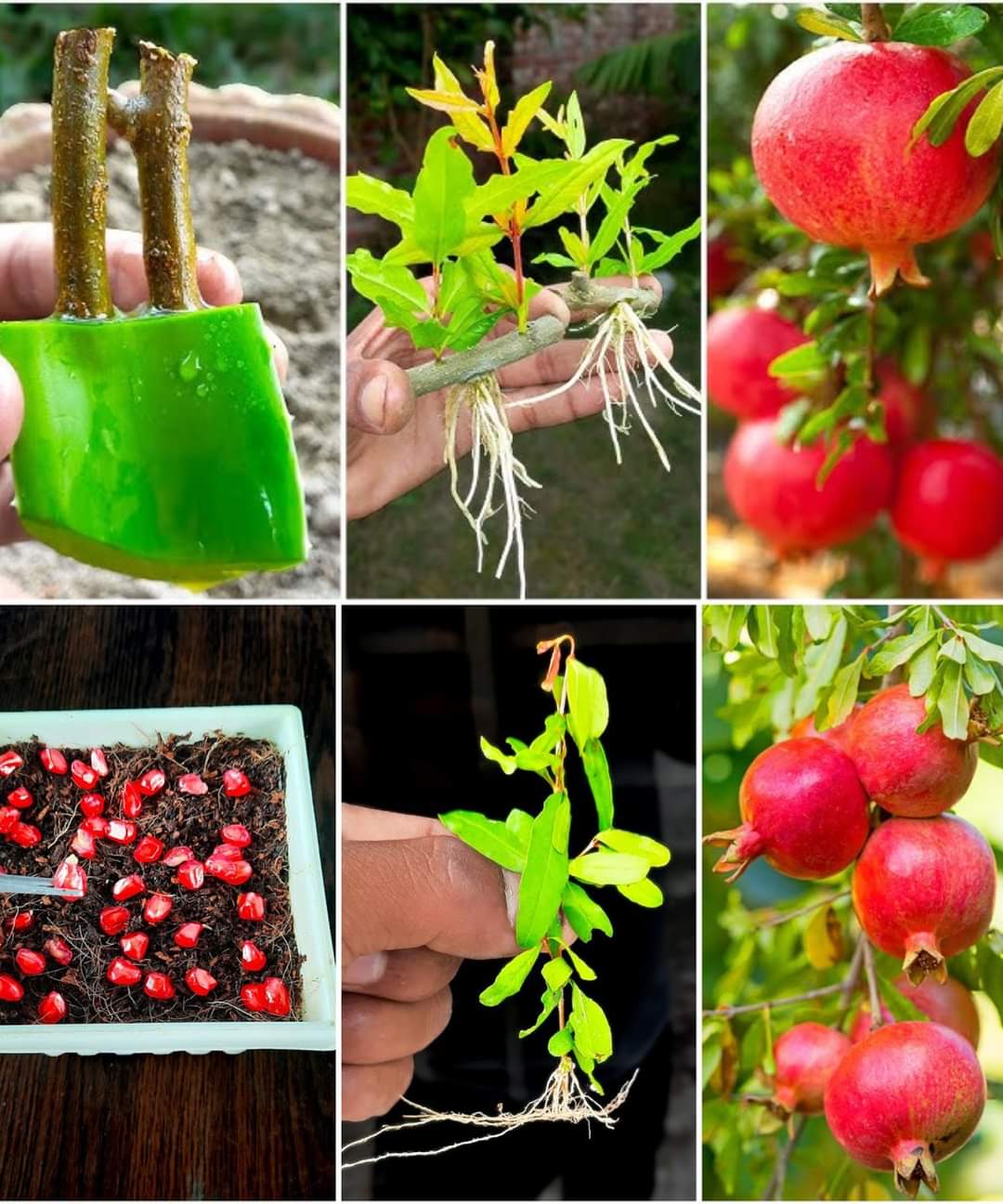How to grow pomegranate plants easily at home
What You’ll Need
Pomegranate seeds or a young pomegranate tree (sapling)
Well-draining potting soil
Containers or a garden bed
Water
Fertilizer (optional)
Steps to Grow Pomegranate Plants
- Choose the Right Time:
Plant pomegranate seeds in spring after the last frost, or plant a young sapling in early spring or fall. - Prepare the Soil:
Use well-draining potting soil, enriched with organic matter if possible. Pomegranates prefer slightly acidic to neutral pH levels (5.5 to 7.0). - Planting Seeds (if starting from seeds):
Soak seeds in water for 24 hours before planting to enhance germination.
Plant seeds about 1/2 inch deep in pots or directly in the garden, spacing them about 12 inches apart. - Transplanting a Sapling (if starting from a young tree):
Dig a hole that is twice the size of the root ball. Place the sapling in the hole and backfill with soil, ensuring the graft union is above the soil line. - Watering:
Water thoroughly after planting, then keep the soil consistently moist until the plants are established. Once established, pomegranates are drought-tolerant, so reduce watering frequency. - Provide Sunlight:
Place your pomegranate plant in a location that receives full sunlight (at least 6 hours a day). If growing indoors, position it near a sunny window. - Fertilizing:
Fertilize with a balanced, slow-release fertilizer every few months during the growing season to promote healthy growth and fruit production. - Pruning:
Prune your pomegranate plant to remove dead or crossing branches and to shape the tree. This encourages better air circulation and fruiting. - Monitor for Pests:
Keep an eye out for common pests like aphids or scale. Use organic pest control methods if necessary. - Harvesting:
Pomegranates are typically ready to harvest in late summer to early fall, when the skin turns a deep red and the fruit feels heavy. Gently twist the fruit to remove it from the tree.
